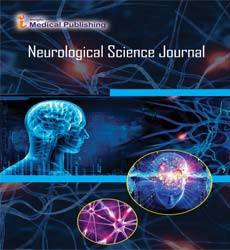Deep Brain Stimulation Related with the Pediatric Dystonia
Jeff Haris*
Department of Neurology, King’s University, London, United Kingdom
- *Corresponding Author:
- Jeff Haris
Department of Neurology,
King’s University,
London,
United Kingdom,
E-mail: haris12jeff@edu.in
Received Date: August 06, 2021 Accepted Date: August 23, 2021 Published Date: August 30, 2021
Citation: Haris J (2021) Deep Brain Stimulation Related with Dystonia in Children Neurol Sci J Vol. 7 No. 4:e003
Description
Dystonia is perhaps the most well-known pediatric development problems and can significantly affect the existences of youngsters and their parental figures. Reaction to pharmacologic treatment is regularly unacceptable. Deep Brain Stimulation (DBS) has arisen as a promising therapy alternative for kids with medicinally headstrong dystonia. Basic brokenness of complex neural organizations consolidating motioning from various mind locales, including the engine and tangible cortices, basal ganglia, cerebellum, brainstem, and spinal string add to dystonia. Pediatric dystonia can be because of fundamental hereditary or obtained etiologies. It tends to be separated or joined with other development or neurologic irregularities. Deep Brain Stimulation (DBS) is a now grounded treatment for various development problems in the two grown-ups and kids. The FDA allowed a helpful gadget exception for pharmacologic safe dystonia in kid’s age 7 years and more seasoned in 2003. From that point forward, utilization of DBS in painstakingly chose more youthful kids has additionally shown advantage. In spite of the drawn out set up accomplishment of DBS in an assortment of conditions, the specific systems of DBS are as yet not totally comprehended. There are conceivable various covering instruments that add to DBS adjustment of pathologic movement. Intraoperative accounts have added to bits of knowledge in the pathophysiology fundamental dystonia. In dystonia, obsessive low recurrence (4-12 Hz) pallidly action has been depicted in neighborhood field likely accounts and there is proof that DBS smothers this pathologic movement. As of late, to resolve the perplexing issue of ideal objective choice for DBS for youngsters with dystonia, Sanger and partners presented a new focusing on convention in which brief profundity cathodes are put at different potential focuses in the basal ganglia and thalamus and are in this way tested for adequacy during a multi week inpatient affirmation. A new meta-examination of DBS in pediatric dystonia revealed that indicators of better results included: more established age at dystonia beginning, idiopathic or acquired dystonia without sensory system pathology, and truncal contribution. Different components that correspond with progress from DBS incorporate lower pattern seriousness, DYT-TOR1A status, and absence of fixed skeletal distortion. In this manner, reference to a DBS community ought to be viewed as before in the illness course of restoratively headstrong dystonia, instead of as a "final desperate attempt" in long standing sickness with amassed joint contractures. Further, we suggest each pediatric DBS case goes through pre-careful assessment by an establishment DBS audit board, similar to a cancer board or epilepsy medical procedure board, comprising of pediatric and grown-up nervous system specialists, neurosurgeons, physical and word related advisors, and some other suppliers engaged with the pre-and post-careful consideration for the kid. Kids with essential dystonia, including DYT-TOR1A, show more noteworthy upgrades in Burke-Fahn- Marsden Dystonia Rating Scale (BFMDRS) than kids with different etiologies, and these enhancements adversely associate with illness length and the proportion of infection term standardized to age at the hour of medical procedure. Because of upgrades with DBS, one focus revealed 61% of patients had ended all dystonia related prescriptions finally follow-up and 91% had suspended no less than one. There is developing proof that the STN might be adequate also, with long haul detailed enhancements going from 70.4%-90.4% in BFMDRS-MS. Perceive that clinical upgrades will in general increment with time with DBS in DYT-TOR1A. Exact complexity rates for DBS in pediatric dystonia are obscure. The lone forthcoming examination on inconvenience rate in pediatric dystonia discovered careful site disease paces of 10.3% and difficulties identified with anodes and augmentations of 18%, including 12.3% pace of lead crack.
Conclusion
Albeit most DBS frameworks are presently MR-viable, there are constraints to the arrangements which should be possible securely. By and large, T2-weighted successions ought to be stayed away from in patients with DBS because of expanded danger of warming. Patients with DBS have securely gotten 3-T MRI. To guarantee ideal patient wellbeing and imaging quality, DBS merchants ought to be counseled in regards to explicit MRI rules for their individual DBS frameworks. Appropriately distinguishing which patients will profit from DBS keeps on being a major question pushing ahead, especially in optional dystonia. To this end, multi-focus patient libraries (PEDiDBS and GEPESTIM) have been made to permit information imparting to the objective of explaining the job of DBS in pediatric patients. Further explaining the basic systems of DBS and ID of ideal careful targets is required, especially in patients with strange neuroanatomy in which elective targets might give more advantage than ordinary targets. Later on, versatile "shut circle" DBS frameworks that react to basic neurophysiology are a thrilling choice that will ideally advance advantage for every individual patient.
Open Access Journals
- Aquaculture & Veterinary Science
- Chemistry & Chemical Sciences
- Clinical Sciences
- Engineering
- General Science
- Genetics & Molecular Biology
- Health Care & Nursing
- Immunology & Microbiology
- Materials Science
- Mathematics & Physics
- Medical Sciences
- Neurology & Psychiatry
- Oncology & Cancer Science
- Pharmaceutical Sciences
